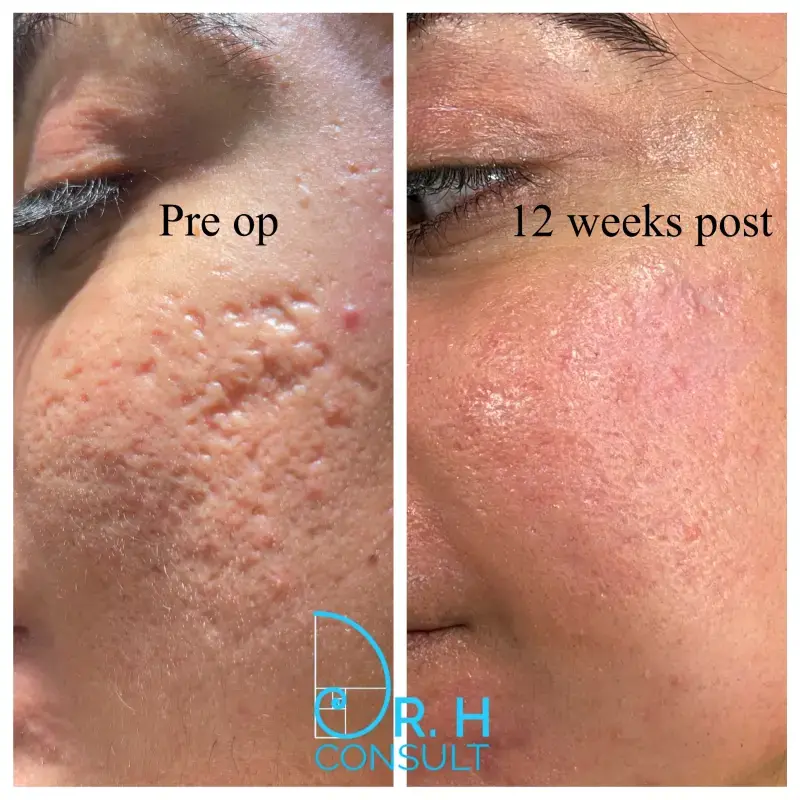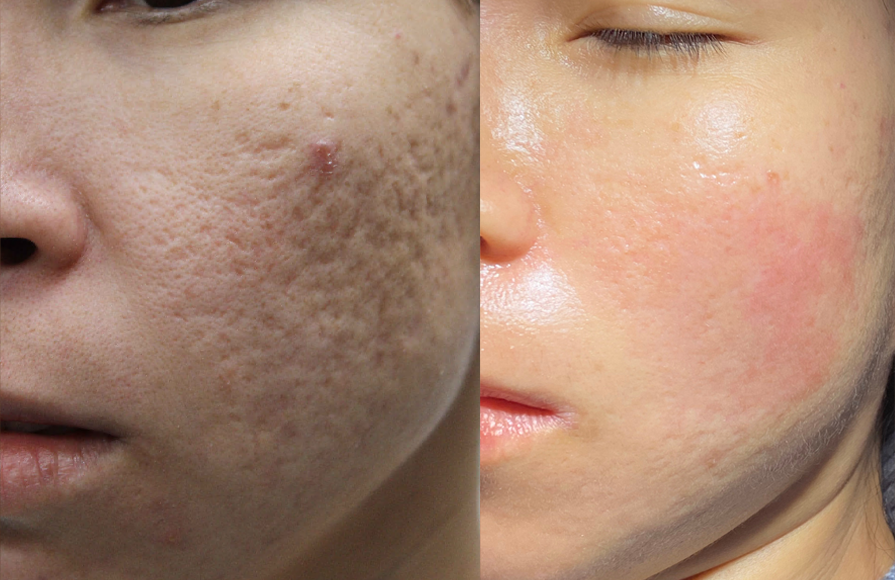Top Acne Treatment for Sensitive Skin: Gentle Solutions for Clear Skin
Top Acne Treatment for Sensitive Skin: Gentle Solutions for Clear Skin
Blog Article
Checking Out Skin Problem: Identifying and Dealing With Acne Scars for Healthier Skin
Acne scars represent a considerable problem for people seeking to maintain healthy skin, as they can impact both appearance and self-worth. Recognizing the numerous types of scars, from atrophic to hypertrophic, is crucial for identifying appropriate therapy alternatives.
Understanding Acne Scars

The body's all-natural recovery process can lead to either atrophic scars, which appear as anxieties in the skin, or hypertrophic marks, which are elevated and arise from overproduction of collagen. In addition, the mental toll of acne marks ought to not be ignored; many individuals report sensations of embarrassment, anxiety, and decreased self-esteem. This psychological concern can affect social interactions and total lifestyle.
Attending to acne marks calls for a thorough understanding of their development and impact. Recognition of the potential for long-term effects connected with unattended marks can motivate individuals to look for proper treatments. Early intervention and effective management strategies can substantially enhance skin appearance and boost psychological strength, emphasizing the importance of understanding the complexities surrounding acne marks.
Types of Acne Marks
Acne marks can be classified right into distinctive kinds, each displaying unique attributes and requiring details therapy approaches. acne scars. The key kinds of acne marks consist of atrophic, hypertrophic, and keloid scars

Hypertrophic scars, on the other hand, are increased above the skin level and are the outcome of too much collagen manufacturing throughout the recovery procedure. They commonly stay within the borders of the initial acne lesion. Keloid marks are comparable however extend past the original injury website, creating larger, raised areas that can be excruciating or scratchy.
Recognizing these kinds of scars is essential for picking ideal treatment choices. Various marks might react better to particular therapies, such as laser treatments, fillers, or surgical interventions, highlighting the importance of a customized technique to acne mark monitoring.
Identifying Your Marks
When reviewing the look of your skin, it is essential to properly determine the sort of scars existing, as this will certainly notify one of the most reliable treatment method. Acne scars generally drop into two classifications: hypertrophic and atrophic marks. Atrophic scars, which are the most typical, show up as depressions or imprints on the skin. These can additionally be identified into ice-pick marks, boxcar marks, and rolling scars, each displaying distinctive attributes and needing various techniques for analysis.
Hypertrophic marks, on the other hand, are elevated and happen as a result of too much collagen production during the healing process. Acknowledging the certain functions of your scars-- such as depth, size, and texture-- is vital for appropriate recognition (skin rejuvenation treatments). In addition, consider the distribution of marks throughout your skin, as this can indicate the intensity and period of the acne condition
Involving with a dermatologist can supply important understandings into the nature of your scars, helping in the differentiation between different types. A complete understanding of your marks will eventually bring about a more tailored and effective treatment plan, making sure a more clear and healthier skin tone.
Treatment Options Available
Identifying the certain type of acne marks present on your skin prepares for checking out reliable therapy options. Common sorts of acne scars include atrophic (depressed), hypertrophic (increased), and post-inflammatory erythema.
For atrophic marks, alternatives such as chemical peels, microneedling, and laser resurfacing are commonly made use of. Chemical peels use acids to get rid of the outer layer of skin, promoting brand-new cell development.
Hypertrophic marks can be treated with corticosteroid injections to Full Article flatten the scar or laser therapy to minimize redness and boost appearance. Silicone gel sheets and pressure dressings may likewise assist in taking care of raised marks.
On top of that, dermal fillers can briefly fill out clinical depressions from atrophic scars, while surgical excision may be ideal for severe cases. Each treatment choice has its advantages and factors to consider, making it important to talk to a skin doctor. They can offer customized suggestions based upon the kind and intensity browse around these guys of your marks, along with your skin type and general wellness.
Tips for Avoidance
Reliable prevention approaches can considerably decrease the probability of establishing acne scars. The primary step is to maintain a constant skin care regimen that consists of mild cleaning, peeling, and moisturizing. Utilizing non-comedogenic products aids avoid clogged pores, which can intensify acne. In addition, integrating topical therapies containing salicylic acid or benzoyl peroxide can properly decrease and handle outbreaks swelling.
Avoiding the desire to pop or select acne lesions is vital, as this can bring about much deeper skin damage and enhance the danger of scarring. Instead, take into consideration using a cool compress or over the counter therapies to minimize swelling and redness.
Sun security is an additional vital element of prevention; ultraviolet (UV) rays can dim marks and prevent the recovery procedure. Using a broad-spectrum sun block with at least SPF 30 daily can shield the skin and promote also healing.
Finally, preserving a balanced diet regimen rich in antioxidants, vitamins, and minerals supports skin health and healing. Staying hydrated and handling stress and anxiety levels can additionally play a substantial function in decreasing acne flare-ups. By implementing these methods, people can considerably minimize their chances of developing acne scars.
Conclusion
In conclusion, understanding and identifying acne marks is essential for reliable therapy and achieving much healthier skin. Numerous kinds of acne marks, including hypertrophic and atrophic scars, demand particular treatments customized to individual demands. Treatment options range from chemical peels and microneedling to corticosteroid injections, stressing the importance of speaking with a skin specialist. Additionally, taking on a mild skin care regimen and securing the skin from UV direct exposure can dramatically contribute to the prevention of more scarring and general skin health and wellness.
The body's all-natural recovery process can result in either atrophic marks, which appear as anxieties in read this article the skin, or hypertrophic scars, which are increased and result from overflow of collagen. They are additional split right into 3 subtypes: ice choice marks, boxcar marks, and rolling scars. Acne scars generally fall into 2 categories: atrophic and hypertrophic scars. These can even more be categorized into ice-pick scars, boxcar marks, and rolling marks, each showing distinctive characteristics and calling for different strategies for evaluation.
Numerous types of acne scars, consisting of hypertrophic and atrophic marks, require specific interventions customized to private demands.
Report this page